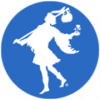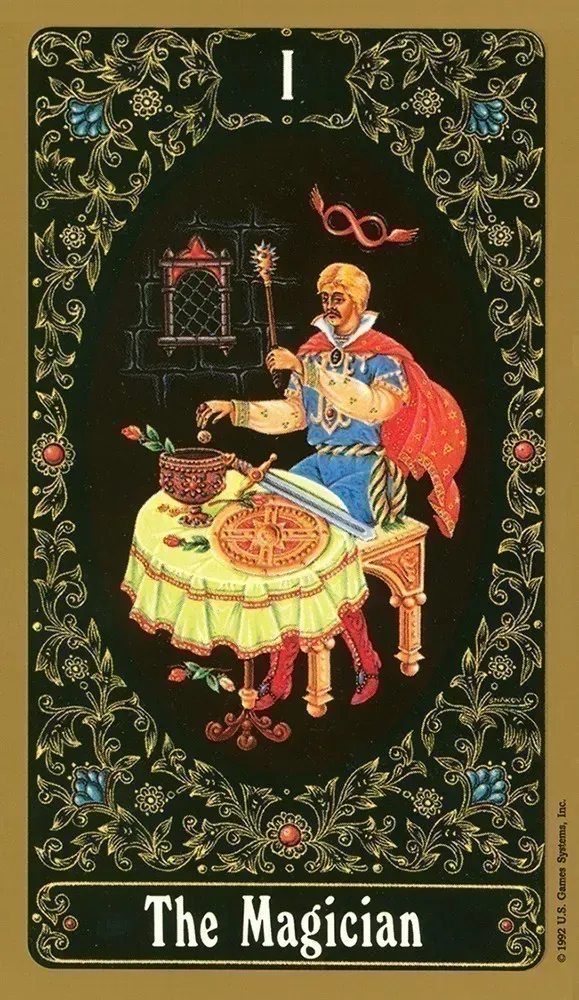The Russian Tarot of St. Petersburg has an interesting and unusual history with a bit of mystery thrown in. In 1987, Stuart Kaplan, chairman of U.S. Games Systems, Inc. (who publish many of our Tarot decks) saw some artwork that was created by Yury Shakov.
Shakov was a well-known Russian artist who specialized in miniatures. His jewelry, intricately decorated Easter eggs and detailed miniature icons were sought after by museums and collectors. At this time, Shakov was recognized as the foremost miniaturist in American even though he had only been in the country for a few years. Kaplan was fascinated by Shakov’s work and decided that he would like to commission Shakov to do a Tarot deck in this distinctive Russian style. It was a few months before the artist would agree to paint the deck. He knew nothing about the Tarot so he had to become acquainted with Tarot as well as develop 78 original miniature paintings.
Over the next two years Yury Shakov created the master designs for the entire deck and he painted the Major Arcana and the Cups. When you realize that he painted these cards to size, just as you see them, you can appreciate the amount of painstaking work that went into them. Miniaturists must brace their arm as they work with brushes that are often so fine they contain only a single hair. Shakov loved his art so much that he sometimes worked for 16 hours a day.
Unfortunately, Yury Shakov didn’t live long enough to complete his deck, he died suddenly in March 1989. Stuart Kaplan decided to commission a second Russian artist to finish the deck in Shakov’s style using Shakov’s notes and sketches.
And here is where the mystery comes in, we don’t know who the second artist is. His or her name was never made public. We also don’t know exactly how much input this artist had in the renderings because Shakov’s notes and sketches have been lost. When you look at the two artists work you can tell a difference in the cards. Shakov’s Trumps and Cups are much more detailed and ornate than the Clubs, Swords and Coins. Shakov used several decks as references, the Tarot of Marseilles, the Classic Tarot and the Waite deck while adding his own touches of Russian art, history and folklore. The deck follows the basic images of the Waite with Russian costumes and backgrounds. The cards seem to focus on the figures while background images are a bit sparse.
The Russian Tarot of St. Petersburg is a truly beautiful deck. All cards have a black background but the colors of the images are vibrant. The cards have an oval frame of gold filigree, the Trumps and each suit has a slightly different variation of the filigree. All cards have a thin solid gold outer border. Shakov’s Trumps and Cups don’t appear to feature any one color but the other suits do. You will find purple featured in the Coins, green in the Clubs and red in the Swords.
The Trump cards are numbered and titled, the suits are titled. The Courts are the standard Page, Knight, Queen and King. The deck is laminated and printed in Belgium.
The card backs have yet another slight variation of the gold filigree frame. All of the suits are represented with a Coin sitting on a Cup and a Sword and Club crossed behind. Sitting on the Coin is a Russian helmet.
—Angelfire
This deck is unusual in a few ways. First, it was started by Yury Shakov - he finished number of the cards, along with the preliminary sketches for the rest - but the remainder were finished by an unknown Russian artist at his death. There really isn't much difference in their styles, the continuity of the deck is amazing. Each card is rendered in sharp detail. This includes a border in gold on the face, mirrored on the back. Both the major and minor arcana are done in full detail, and this in one of the first decks I have personally run into printed on a black background. It puts a whole new cast on the deck, gives it a new feel, has a different effect on the spirit.
Lastly, even though this deck was not geared toward beginners (or those rediscovering the art) it is truly easy to read. Because of the detail mentioned before, those that do more instinctual reading instead of using the 'given' or 'proper' meaning of the cards are given a clear advantage. For example, while doing the first reading using this deck, the sun in the four of clubs seemed to pop out at me. Normally this wouldn't have been something to notice, but it was pivotal to the reading.
The little white booklet is also a nice help. The meaning and reversed meaning are easy to find, and it has the basic ten-card spread included.
This is a truly spiritual deck to me, and I'm glad I bought it. As soon as I took it home and got it out of the box, it clicked with me. Meanings of certain cards were coming to me just flipping through the deck. This is going to be the one I can't put down.
—Cricket. Aeclectic Tarot

















